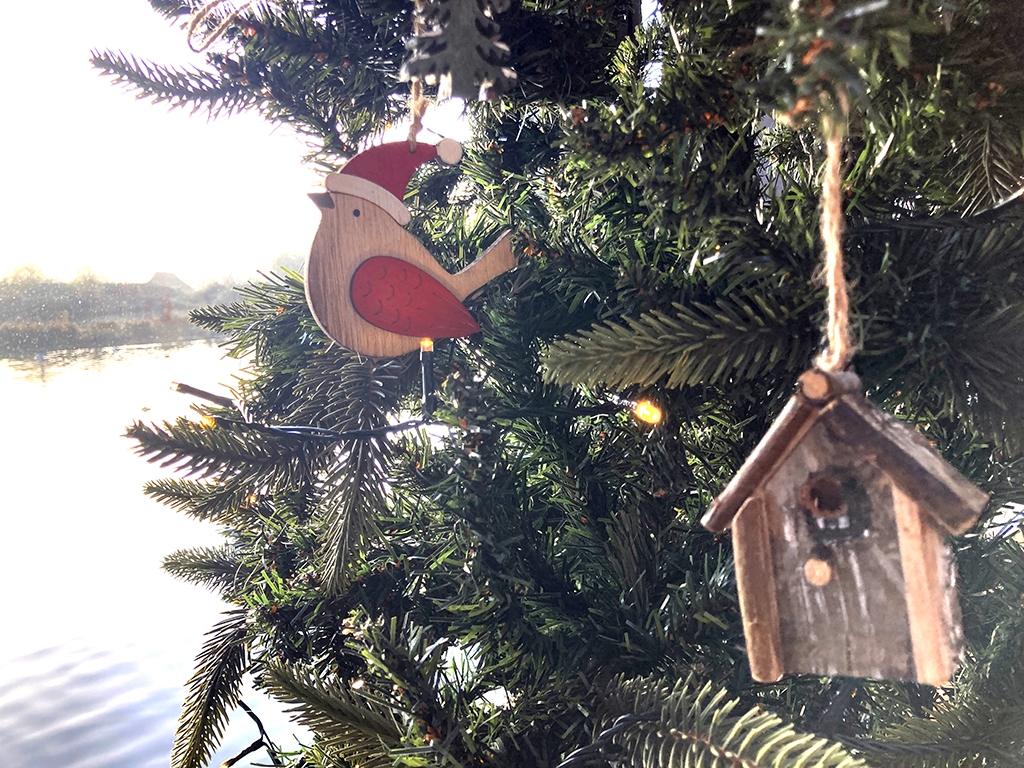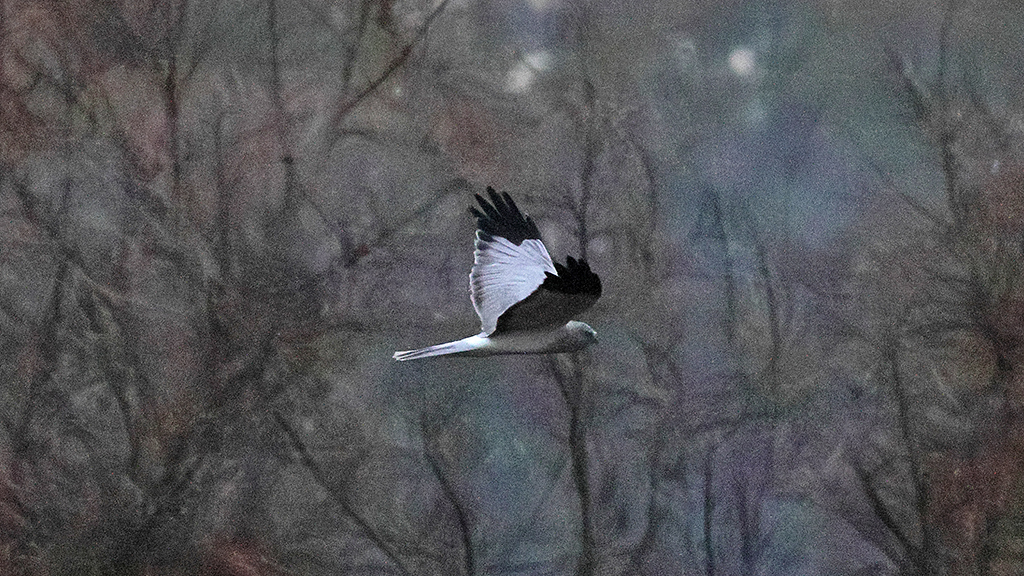Watching our Wild Side

Many types of wetland wildlife are raising their young on the safety of our wetland reserve.
Our team manages the ponds, wet meadows island and scrapes specifically for certain species, others appear as spring surprises. Here are this season's highlights. The kingfisher photo above is by Alec Pelling.
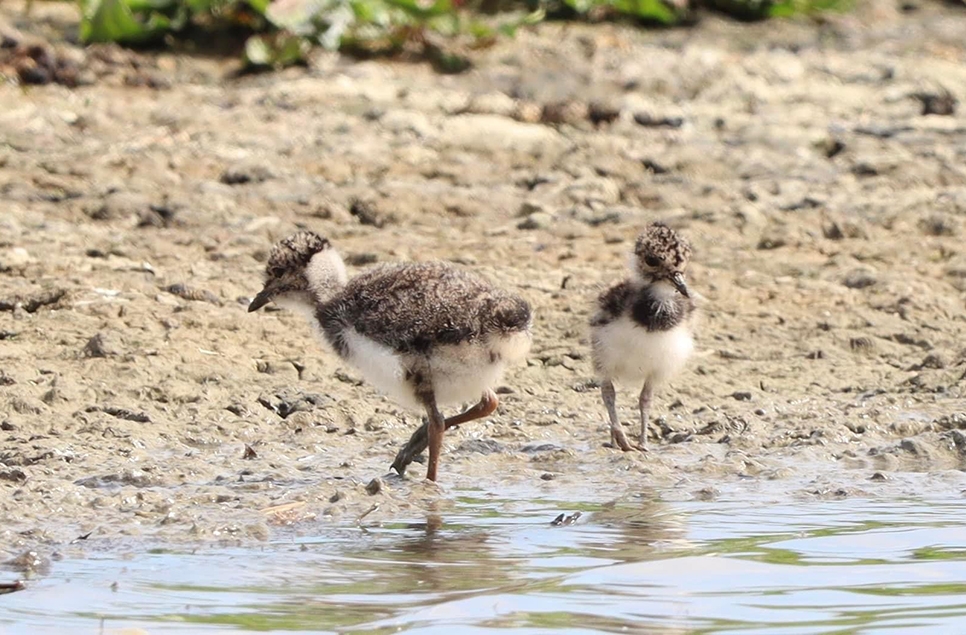
Lapwing chicks from the Ramsar hide Photo: James King
Look for lapwing chicks
Lapwings have paired up and are nesting on the wet grassland. From Ramsar hide we are still counting 6-8 lapwing. The Reserve team have spotted six lapwing chicks: two that are close to fledging, two "medium" sized ones and two that have hatched more recently. The vegetation is getting higher so we don’t see all the chicks everyday. We do see parents sometimes taking to the air with warning cries for their chicks when crows, herons and herring gull predators are spotted.
There are lapwing at the Lapwing hide as well. We have spotted up to 5 lapwing adults mobbing a crow that came into their airspace. Males are still doing the occasional displays but we don’t know for sure if any lapwing are on nests there.
The Reserve Team are watching the chicks daily and will soon be trying to fir them with leg rings when the chicks are big enough and before they fledge.
Kingfishers on the Arun Riverlife lagoon
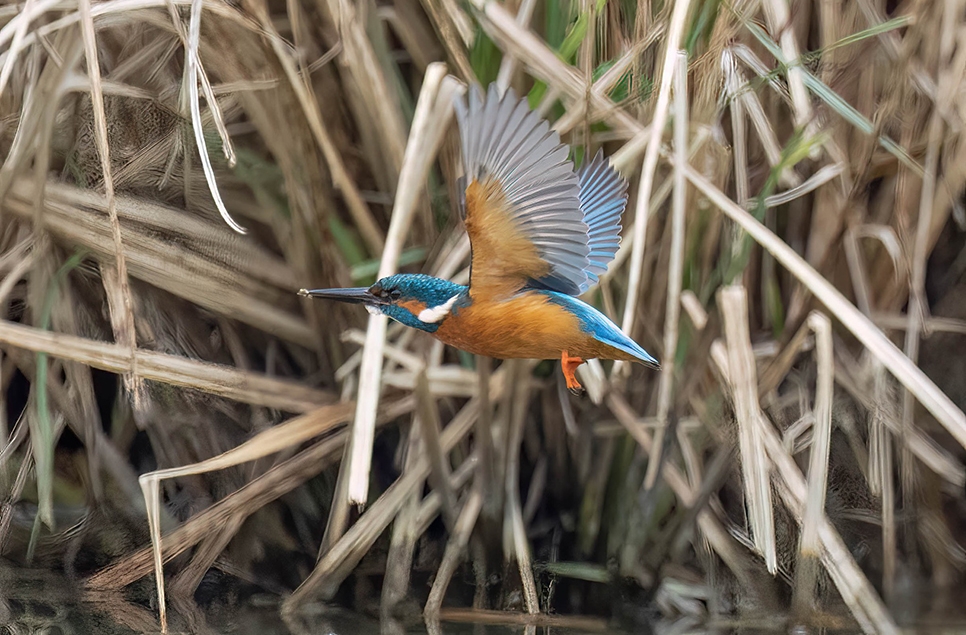
Photo of a kingfisher in flight near the nesting bank is courtesy of visitor Alec Pelling.
Sightings of a pair of kingfishers courting, mating and popping in and out of hole #5 on the wooden nesting bank indicates a pair of kingfishers are nesting on the Arun Riverlife lagoon again this year. This artificial nesting bank was built specifically for kingfishers when the lagoon was de-silted and re-landscaped in 2013.
We think the first brood of this pair may have already fledged. Staff have heard the cry of a juvenile kingfisher begging for breakfast in the morning. Most years the kingfishers rear a second brood at Arun Riverlife - their eggs only have a 19 day incubation period. Watch for them from the comfort of the Discovery hide. The birds spend time on the perches out in front of the bank.
A pair of kingfishers that nested at the Sand Martin hide among the sand martins have not returned to that spot this season. Maybe they didn't like their noisy neighbours! Is more likely that their territory was too close to the fishing grounds of the pair at Arun Riverlfe so they have moved on.
Mandarin ducklings
Wild mandarin ducks have been regulars on the water of the Trumpeter Swans meadow pond in the Woodloop. These ducks are tree nesters which is likely why they favour this part of our site. On Tues 9 May we spotted a female mandarin on the water with a brood of ducklings! They family are able to leave the fenced pond via the water inflow opening so they can move throughout in the Woodloop area.
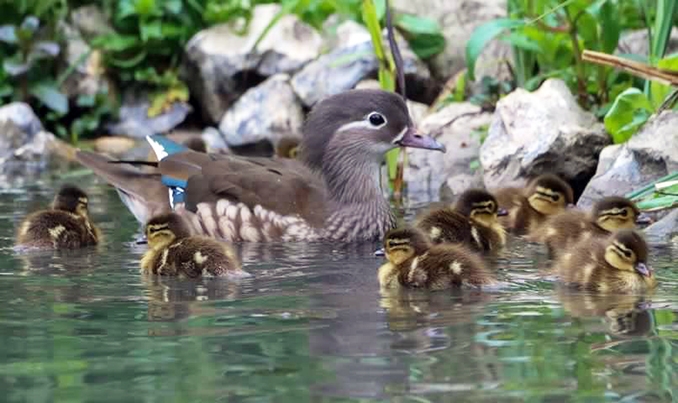
Mandarin mum and ducklings photo courtesy of Katie McGoldrick
Tawny Owlet
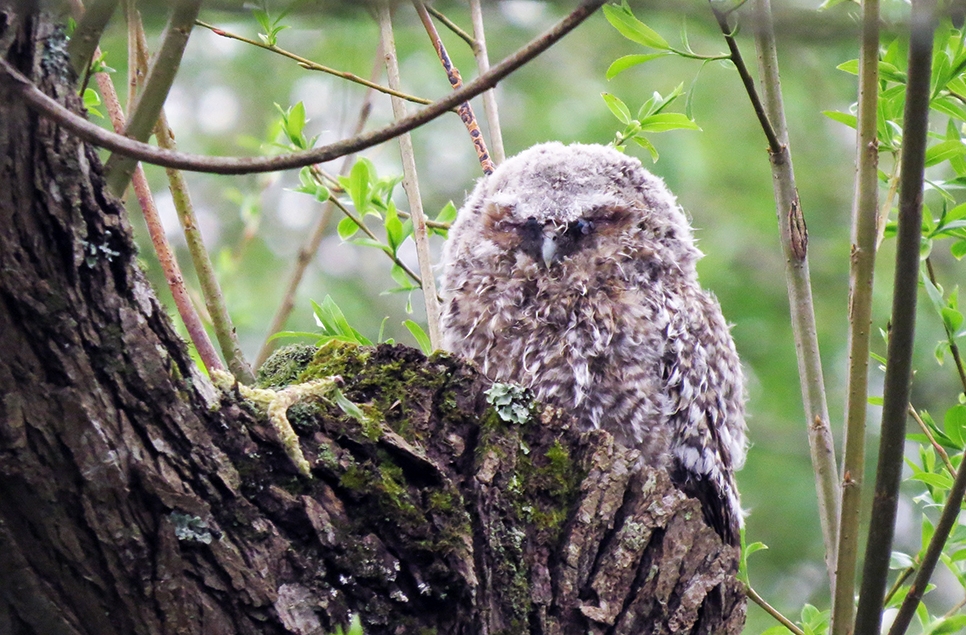
On Tues 9 May our team was doing some surveying when the spotted this young tawny owlet at the bridge section of the Reedbed boardwalk. This owlet was in a tree that holds an owl nesting barrel that was made from an old water butt. The young owl was still quite fluffy but with some adults feathers. We had spotted owlets in the trees near here a few years back.
Swirls of sand martins
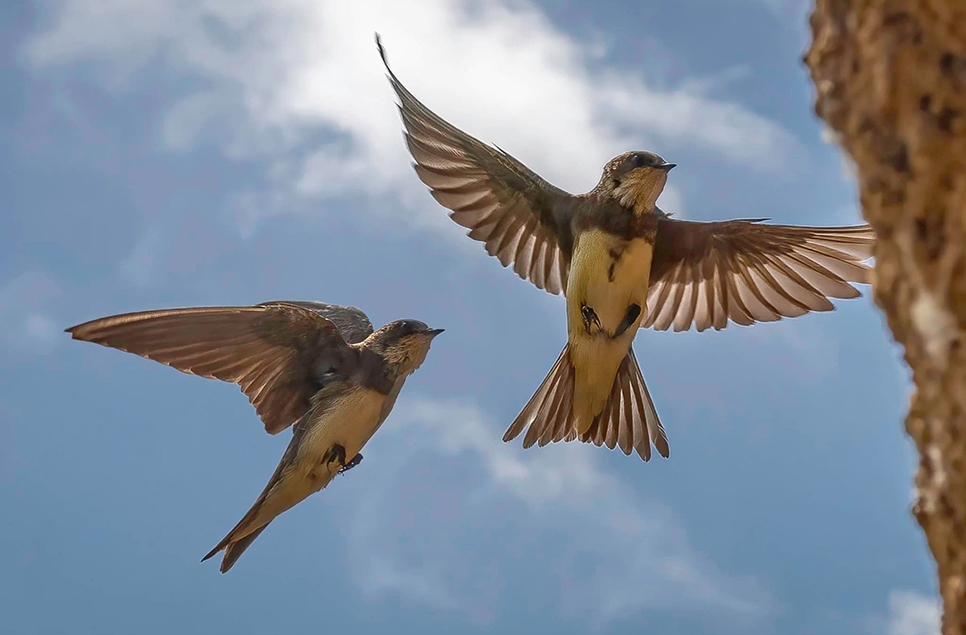
Sand martins at Arundel, 2022 Waterlife Magazines photo of the year, by Chris Bishop
At the Sand martin hide we are seeing about 20 sand martins at a go, hawking insects over the water and entering burrows on both ‘wings’ of the hide. The Sand Martin hide windows are closed but you will be able to see the birds through the windows as the wings of the hide are angle inward slightly. The martins and swallows are easier to see on cloudy days when they hunt the flying insects that are pushed closer to the water by cooler air. The amount of birds in this small colony has been increasing for the past five years so we hope this number will build again this year. In the autumn we will check the nesting holes to see how many boxes were used.
A pair of oystercatchers seem to have settled there now, as in previous years - we haven't spotted a nest yet. There are 20+ black-headed gull nests on the right hand island.
Sand martins, swallows and house martins stop off at Arundel Wetland Centre on their way northwards, returning from winter homes in Africa and Europe. Some sand martins stay and use the nesting banks attached to the Sand martin hide to raise chicks. Look up while you stand near the Sand martin hide and in the Wildlife garden. The martins are fast fliers!
Sand martins at the Sand Martin hide nesting bank Photo: WWT
Oystercatcher couples
Two pairs of oystercatchers arrived onsite again in March. One pair seem to have finally settled down around the Sand martin hide and the others in the Pelican Cove / Coastal Creek avairy area similar to recent years. No news on chicks yet but we are watching!
Want to visit to see what's springing out for yourself?
Be inspired by and connect with wetland wildlife this season. Book your visit online and save time at the till, click below.
